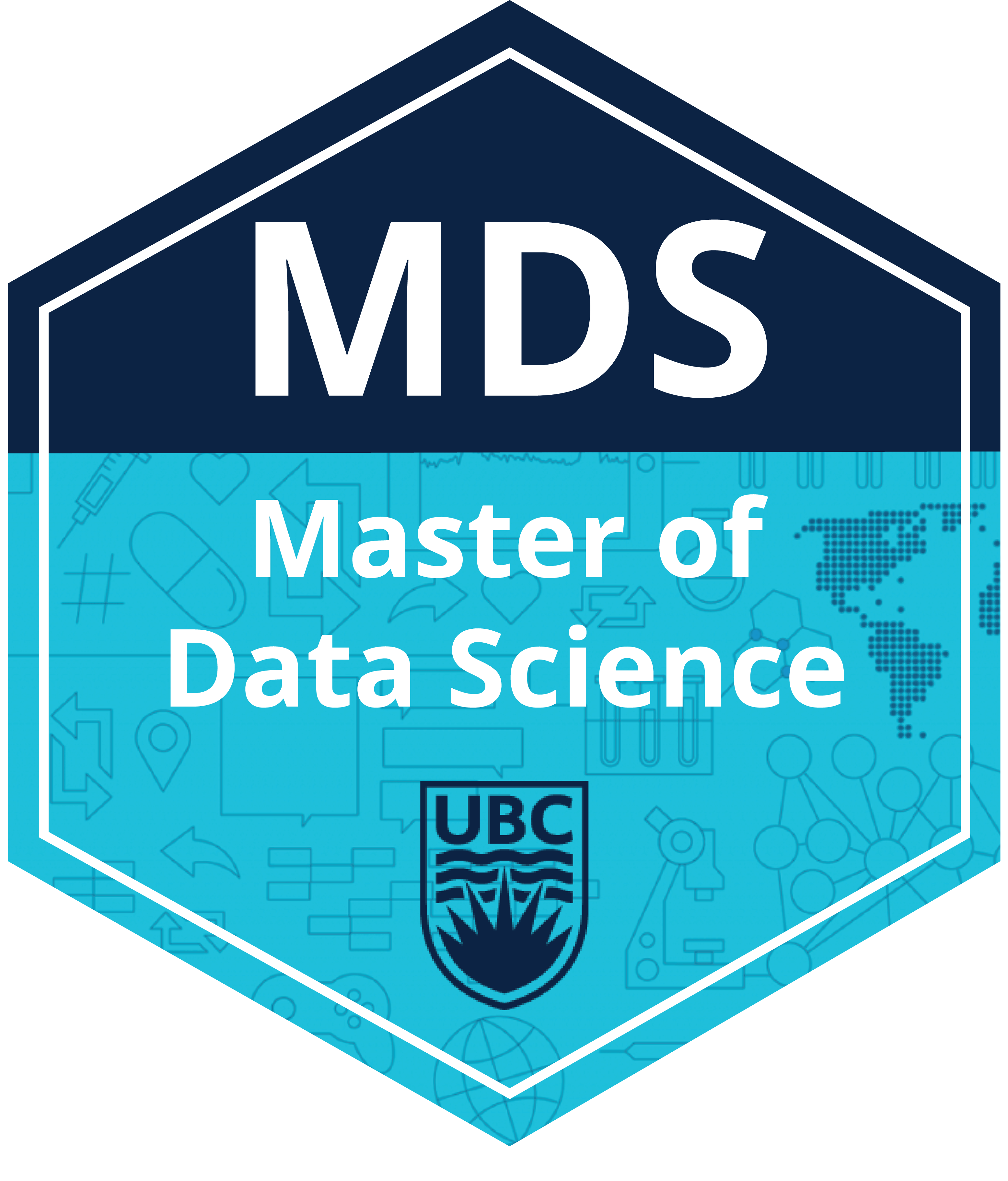Course Learning Objectives#
By the end of this course, you will be able to:
Describe supervised learning and its suitability for various tasks.
Explain key machine learning concepts such as classification, regression, overfitting, and the trade-off in model complexity.
Identify appropriate data preprocessing techniques for specific scenarios, provide reasons for their selection, and integrate them into machine learning pipelines.
Develop an intuitive understanding of common machine learning algorithms.
Build end-to-end supervised machine learning pipelines using Python and scikit-learn on real-world datasets.
Lecture Learning Objectives#
Below are specific lecture learning objectives.
Introduction and Course Information#
be able to explain the motivation to study machine learning;
be able to differentiate between supervised and unsupervised learning;
know how to navigate through the course material.
Lecture 1: Terminology, Baselines, Decision Trees#
differentiate between classification and regression problems;
explain machine learning terminology such as features, targets, predictions, training, and error;
use
DummyClassifierandDummyRegressoras baselines for machine learning problems;explain the
fitandpredictparadigm and usescoremethod of ML models;broadly describe how decision tree prediction works;
use
DecisionTreeClassifierandDecisionTreeRegressorto build decision trees usingscikit-learn;explain the difference between parameters and hyperparameters;
explain the concept of decision boundaries.
Lecture 2: Machine Learning Fundamentals#
explain how decision boundaries change with the
max_depthhyperparameter;explain the concept of generalization;
split a dataset into train and test sets using
train_test_splitfunction;explain the difference between train, validation, test, and “deployment” data;
identify the difference between training error, validation error, and test error;
explain cross-validation and use
cross_val_scoreandcross_validateto calculate cross-validation error;explain overfitting, underfitting, and the fundamental tradeoff;
state the golden rule.
Lecture 3: \(k\)-nearest neighbours (\(k\)-NNs), support vector machines (SVMs) with RBF kernel#
explain the notion of similarity-based algorithms;
broadly describe how \(k\)-NNs use distances;
discuss the effect of using a small/large value of the hyperparameter \(k\) when using the \(k\)-NN algorithm;
describe the problem of curse of dimensionality;
explain the general idea of SVMs with RBF kernel;
explain the differences between \(k\)-NNs and SVM RBFs;
broadly describe the relation of
gammaandChyperparameters with the fundamental tradeoff.
Lecture 4: Preprocessing and pipelines#
identify when to implement feature transformations such as imputation, scaling, and one-hot encoding in a machine learning model development pipeline;
use
sklearnfor applying feature transformations on your dataset;discuss golden rule in the context of feature transformations;
use
sklearn.pipeline.Pipelineto build a preliminary machine learning pipeline;use
ColumnTransformerto build all our transformations together into one object and use it withsklearnpipelines.
Lecture 5: More on categorical features and encoding text data#
explain
handle_unknown="ignore"hyperparameter ofscikit-learn’sOneHotEncoder;identify when it’s appropriate to apply ordinal encoding vs one-hot encoding;
explain strategies to deal with categorical variables with too many categories;
explain why text data needs a different treatment than categorical variables;
use
scikit-learn’sCountVectorizerto encode text data;explain different hyperparameters of
CountVectorizer.
Lecture 6: Hyperparameter optimization and optimization bias#
explain the need for hyperparameter optimization
carry out hyperparameter optimization using
sklearn’sGridSearchCVandRandomizedSearchCVexplain optimization bias
identify and reason when to trust and not trust reported accuracies
Lecture 7: Naive Bayes#
Explain the naive assumption of naive Bayes.
Predict targets by hand on toy examples using naive Bayes.
Use
scikit-learn’sMultiNomialNB,BernoulliNB, andGaussianNB.Use
predict_probafor different classifiers and explain its usefulness.Explain the need of smoothing in naive Bayes.
Explain how
alphacontrols the fundamental tradeoff.Use naive Bayes for multi-class classification.
Name advantages and disadvantages of naive Bayes.
Lecture 8: Linear models and multi-class, meta-strategies#
Explain the general intuition behind linear models
Explain the predict paradigm of linear models
Use
scikit-learn’sLogisticRegressionclassifierUse
fit,predict,predict_probaUse
coef_to interpret the model weights
Compare logistic regression with naive Bayes
Explain the advantages and limitations of linear classifiers
Carry out multi-class classification using OVR and OVO strategies.
